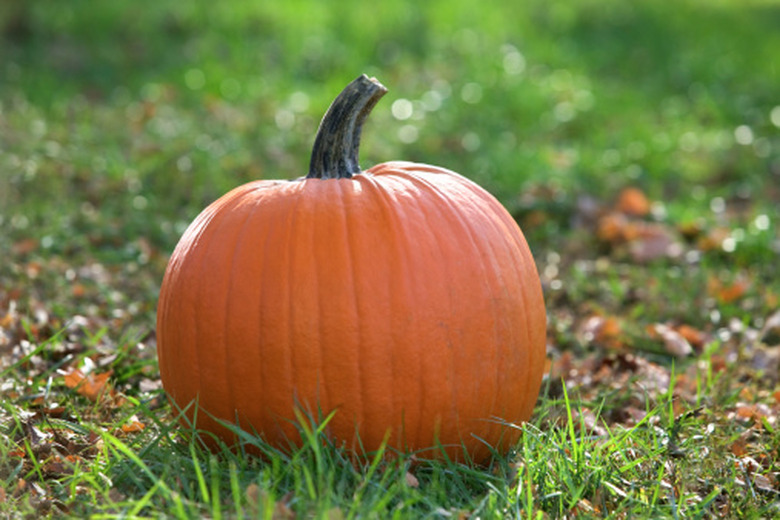How To Tell If A Pumpkin Is Overripe?
The smell of homemade pumpkin pie or ambiance of pumpkins all around symbolizes the joy of autumn. However, an overripe pumpkin can quickly spoil that joy because these pumpkins don't look as robust and firm and they don't have suitable pulp for baking and preparing other recipes. The inside of the pumpkin may have a foul odor and bad taste from bacteria breeding. Whether you harvest your own crops or buy pumpkins at the grocery store, follow a few simple steps to ensure that you don't choose overripe pumpkins.
Step 1
Look at the color of the pumpkin to see if it has a uniformly medium orange shade and a hard rind. Immature pumpkins have a greenish-orange color and overripe pumpkins become dark orange.
Step 2
Check for blemishes and bruises. Pumpkins begin to develop flaws as they become too ripe. However, this can also happen if a person drops and damages the pumpkin.
- The smell of homemade pumpkin pie or ambiance of pumpkins all around symbolizes the joy of autumn.
- Whether you harvest your own crops or buy pumpkins at the grocery store, follow a few simple steps to ensure that you don't choose overripe pumpkins.
Step 3
Hold the pumpkin to see if it's firm on all sides. An overripe pumpkin starts to become less firm with soft spots on the exterior.
Step 4
Smell the pumpkin to see if you can sense any odors coming from it. Ripe pumpkins have a light sweet scent, but you may not smell anything (which is fine). Overripe pumpkins emit a faint foul odor that gradually intensifies as the pumpkin continues to ripen.
Step 5
Check the pumpkin to make sure it has no signs of powdery mildew anywhere on the exterior. When a pumpkin becomes too ripe it can develop mildew as it starts to rot.
- Hold the pumpkin to see if it's firm on all sides.
- Smell the pumpkin to see if you can sense any odors coming from it.
Care Of Pumpkins?
Pumpkins require plenty of water to grow properly. Organic matter, such as aged compost, added to the garden before planting supplies nutrients for newly planted pumpkins. Another option early in the plant's growth is a fertilizer high in nitrogen applied when the plant reaches 1 foot tall. Once the pumpkins begin forming, you can squeeze off the ends of the vines with a fuzzy material. Pruning the ends of long vines helps control growth and focus more energy on the fruit, but excessive cutting of vines sometimes damages the plant and affects the fruit growth. Keeping the garden clean minimizes the disease risks for problems like mildew, bacterial wilt and mosaic virus that often affect pumpkins. Removing and killing the bugs minimizes damage.
- Pumpkins require plenty of water to grow properly.
- Another option early in the plant's growth is a fertilizer high in nitrogen applied when the plant reaches 1 foot tall.
References
- University of Illinois Extension: Harvesting and Storing Pumpkins, Winter Squash, and Gourds:
- University of Illinois Extension: Pumpkin Selection; Ron Wolford and Drusilla Banks
- University of Illinois Extension: Growing Pumpkins; Ron Wolford and Drusilla Banks
- University of Illinois Extension: Questions and Answers; Ron Wolford and Drusilla Banks
- Harvest to Table: How to Grow Pumpkin
- The Old Farmer's Almanac: Pumpkins
